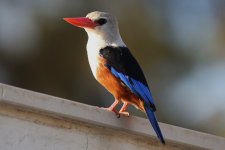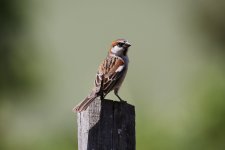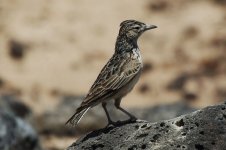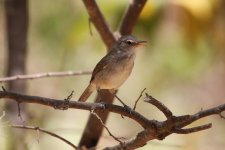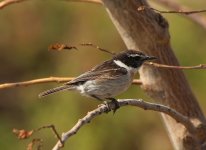I put together a target list of the most gettable species for the team this year, and suggested locations based on their itinerary. It doesn't include any Cat C species or vagrants as these are so unpredictable. Getting all the birds would put them on around 700 species. The Azores could easily add another 10-15 species to this, plus the various Cat C and other vagrant ticks.
Any suggestions/improvements would be welcome.
I believe your omissions are from the following (including some perhaps unlikely):-
Egypt - Brown Booby, Pink-backed Pelican, Yellow Bittern, Goliath Heron, Yellow-billed Stork, Lappet-faced Vulture, African Swamphen, Greater Painted Snipe, Three-banded Plover, Sooty Gull, Saunders's Tern, African Skimmer, Chestnut-bellied Sandgrouse, Senegal Coucal, African Pied Wagtail, Nike Valley Sunbird (

), Streaked Weaver
Georgia - Ring Ouzel, Common Rosefinch, European Honey-buzzard
Cyprus - Cyprus Scops Owl
Russia - Azure Tit, Little Bunting, Pin-tailed Snipe, Swinhoe's Snipe, Oriental Turtle Dove, Pallas's Reed Bunting
Italy - Sacred Ibis, Red-billed Leiothrix, Northern Bobwhite
Corsica - California Quail
Mallorca - Mediterranean Flycatcher
France - Reeve's Pheasant
Portugal - Yellow-crowned Bishop, Black-headed Weaver, Red Avadavat
Sweden - Willow Ptarmigan, Rock Ptarmigan
Azores - Monteiro's Storm-petrel, Sooty Tern, Azores Bullfinch
Cape Verde - Fea's Petrel, Boyd's Shearwater, Red-billed Tropicbird, Helmeted Guineafowl, Cape Verde Swift, Grey-headed Kingfisher (photo), Iago Sparrow (photo), Magnificent Frigatebird, Cape Verde Buzzard, Raso Lark (photo), Cape Verde Warbler (photo)
Canaries - Nanday Parakeet, Fuerteventura Chat (photo)
All the best
Paul





